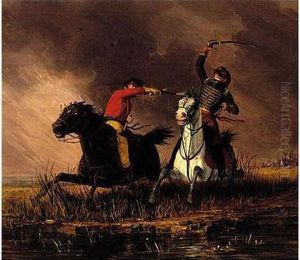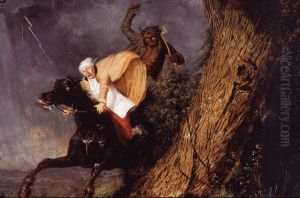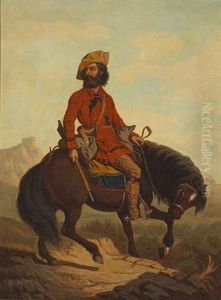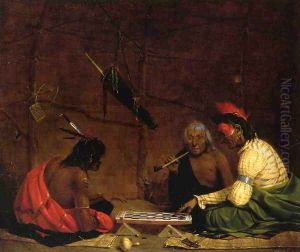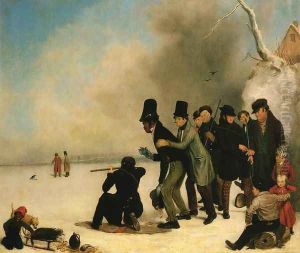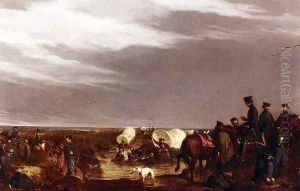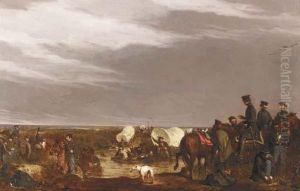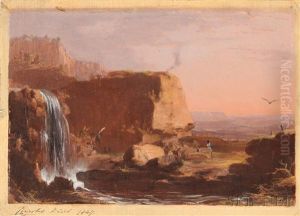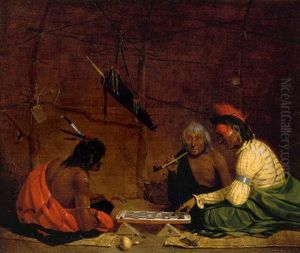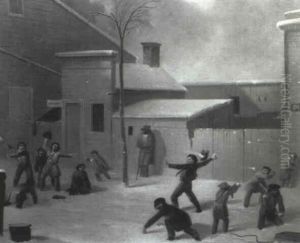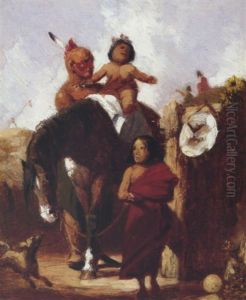Charles Deas Paintings
Charles Deas was an American painter known for his genre paintings, particularly those depicting Native Americans and scenes from the early western frontier. Born in 1818 in Philadelphia, Pennsylvania, Deas developed an interest in art at a young age. Despite the lack of extensive formal training, he managed to cultivate a significant level of skill and was recognized for his artistic talents early on.
After a brief period at the Pennsylvania Academy of the Fine Arts, Deas moved to New York City, where he became influenced by the works of other genre painters of the time. He soon developed a distinct style characterized by his dramatic and often romanticized visions of the American West. In the 1830s and 1840s, Deas' work gained popularity, and he became known for his strong narrative paintings, which often featured trappers, Native Americans, and scenes of frontier life.
One of Deas' most famous works is 'The Death Struggle,' depicting a dramatic encounter between a Native American warrior and a grizzly bear. His paintings were notable for their dynamic composition, vivid detail, and emotional intensity, which captured the imagination of the American public. Despite the popularity of his work, Deas struggled with mental health issues throughout his life and was eventually institutionalized in 1848.
Charles Deas' career was short-lived, as mental illness ultimately hindered his ability to continue painting. He spent the last two decades of his life in various institutions and died in relative obscurity in 1867. It wasn't until the late 20th and early 21st centuries that Deas' work was rediscovered and reassessed by art historians and critics, leading to a renewed appreciation of his contribution to American art, particularly in his portrayal of the early West. Today, his paintings are considered important cultural artifacts that reflect the complex and often mythologized narrative of American expansion and the diverse peoples who inhabited the frontier.
